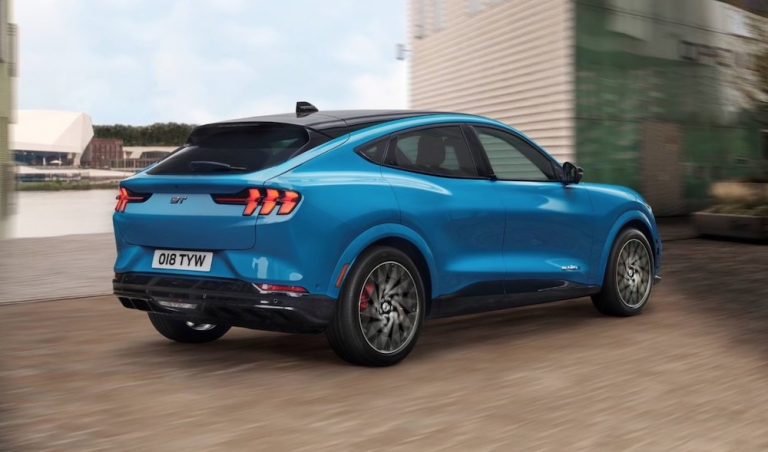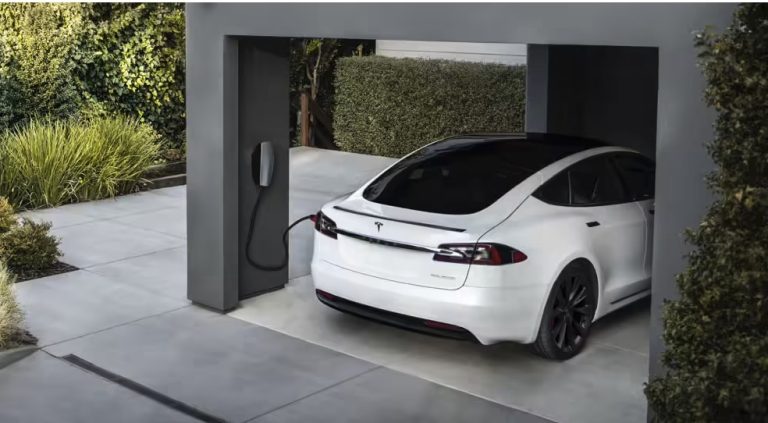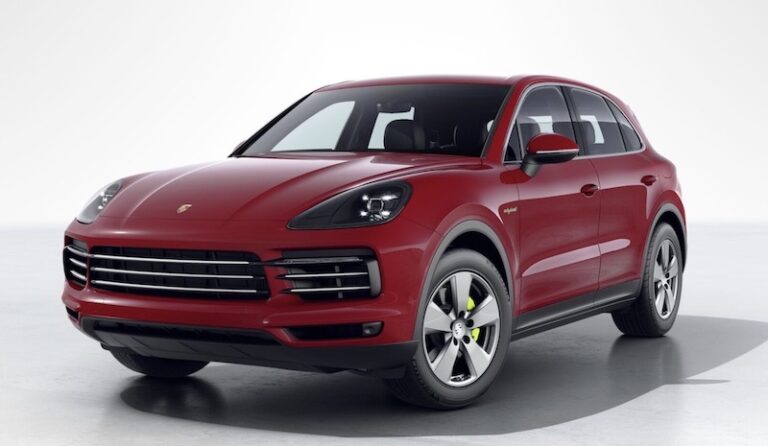Electric Cars: The Basics
For those of you new to zero-emission electric driving, we recommend a read of the following articles:
Sign up to the e-zoomed Electric Living newsletter
The Kia Sorento PHEV SUV
Kia Corporation, the South Korean automotive manufacturer is fast developing a portfolio of lower-emission ‘eco’ vehicles, to include, zero-tailpipe emission battery-electric vehicles (BEVs), plug-in hybrid electric vehicles (PHEVs) and mild hybrids. The Korean automotive company is headquartered in Seoul, and it is South Korea’s second largest automotive manufacturer after the Hyundai Motor Company (Hyundai owns a 33.88% stake in Kia Corporation). At one point, the US automotive manufacturer, Ford Motor Company, also owned a stake in Kia.
Kia Corporation has been active in the European markets since 1991. The Kia electric vehicle (EV) portfolio includes both, battery-electric vehicle (BEV) and plug-in hybrid electric vehicle (PHEV) models:
- All-electric Kia Niro
- All-electric Kia EV6
- All-electric Kia EV6 GT
- All-electric Kia EV9
- All-electric Kia EV3
- All-electric Kia Soul EV
- Kia Niro Plug-In Hybrid
- Kia XCeed Plug-In Hybrid
- Kia Ceed Sportswagon Plug-In Hybrid
- Kia Sorento Plug-In Hybrid
- Kia Sportage Plug-In Hybrid
The Kia Sorento mid-sized SUV has been manufactured since 2002. The current fourth-generation Sorento was unveiled in February 2020. The Kia Sorento is also available as a plug-in hybrid electric vehicle (PHEV).
For larger families or company-car drivers that need more passenger seats, the 7-seater Kia Sorento plug-in hybrid electric vehicle is an option worth serious consideration. Moreover, despite the increase in the availability of electric vehicles (EVs), the availability of seven-seater electric cars still remains limited.
The Kia Sorento PHEV pairs a 1.6-litre T-GDi ISG petrol engine with an electric motor, powered by an onboard EV battery. The automotive manufacturer claims a fuel economy up to 1.6 l/100 km for the electric vehicle (EV). Of course the real-world fuel economy will depend on a number of factors, but none as influential as using the e-mode.
Bottom-line, to increase the fuel economy of the vehicle and lower the driving costs, the PHEV should be driven as much as possible on the electric mode. If the e-SUV is driven with limited use of the pure electric mode, expect an higher fuel economy.
Given the WLTP certified emission-free electric range is 57 km, and most commutes are short, there is much scope for taking advantage of electric driving to save money. The PHEV has a 13.8 kWh onboard EV battery, which is reasonably standard for a PHEV of this size.
However, expect the real-world electric range to be closer to 50 km. The EV range is impacted by a number of factors, to include: driving profile, speed, load, regenerative braking, road condition, weather, wheel size and a lot more.
Taking advantage of the EV range will also require inculcating a habit of charging the EV on a regular basis, which again is as easy as charging a smartphone. We at e-zoomed recommend the use of a dedicated EV charging station, like easee to charge the EV. We do not encourage the use of a domestic 3-PIN plug.
Charging the EV using a single-phase EV charger will take up to 3 hours 25 minutes (0% → 100%). Of course, if you top up on a regular basis, the charging time will be faster. If you insist on using a domestic 3-PIN plug, it will take over 5 hours to charge up to 100%. The EV incorporates a 3.3 kW AC onboard charger and is not capable of DC fast charging.
In terms of practicality, the EV has much to offer. The interior seven-seater cabin is spacious, with ample headroom and legroom for front and rear seat passengers, to include the third row. Despite the placement of the onboard EV battery, the boot space has not been impacted (604 L).
The standard level of technology is decent, to include: 10.25″ touchscreen satellite navigation, Apple Car Play, Android Auto, reversing camera, blind-spot monitor camera, highway driving assist, remote smart park assist and more. The EV has been awarded a Five-Star NCAP Safety Rating.
The performance of the electric SUV is reasonable. The all-wheel drive Sorento Plug-In Hybrid can achieve 0-100 km/h in 8.7 seconds, also benefiting from instant torque. The hybrid drivetrain (1.6-litre T-GDi/electric motor) delivers a maximum power of 261 bhp (torque 350 Nm), sufficient for city and motorway driving. The top speed is 193 km/h.
The Kia plug-in hybrid tailpipe emissions are low (38g CO2/km), compared to the conventional petrol variant (168g CO2/km). Bottom-line, electric driving is good for the environment and the wallet!
| PROS | CONS |
|---|---|
| A seven-seater with ample space. Practical for families | Not as affordable. Other better priced alternatives available |
| Cheap to run on electric mode | Ride quality not as refined |
| Good standard specifications | On board charger limited to 3.3 kW. DC charging not available |
The Kia Sorento PHEV SUV (credit: KIA)
| At A Glance | |
|---|---|
| EV Type: | Plug-In Hybrid Electric Vehicle (PHEV) |
| Vehicle Type: | SUV |
| Engine: | Petrol-Electric |
| Available In Ireland: | Yes |
| Variants (2 Options) |
|---|
| Kia Sorento K3 1.6 Petrol PHEV (from € 56,500) |
| Kia Sorento K4 1.6 Petrol PHEV (from € 61,495) |
| EV Battery & Emissions | |
|---|---|
| EV Battery Type: | Lithium-ion |
| EV Battery Capacity: | Available in one battery size: 13.8 kWh |
| Charging: | DC charging not available. On board charger: 3.3 kW AC (0% – 100%: 3 hrs 25 mins) |
| Charge Port: | Type 2 |
| EV Cable Type: | Type 2 |
| Tailpipe Emissions: | 38g (CO2/km) |
| Warranty: | 7 years or 160,000 km |
| Average Cost Of Residential Charging | |
|---|---|
| Battery net capacity : 8.8 kWh | € 2.10 |
| Battery net capacity : 11.6 kWh | € 2.78 |
| Battery net capacity : 12.0 kWh | € 2.87 |
| Battery net capacity : 13.10 kWh | € 3.14 |
| Battery net capacity : 14.10 kWh | € 3.37 |
- Note 1: The average cost of residential electricity in Ireland varies depending on the region, supplier and type of energy used. An average for Ireland is 23.97 cents/kWh.
- Note 2: Not all EV manufactures make available the data on net EV battery capacity, and in a number of instances the EV battery capacity advertised, does not state if it is gross or net capacity. In general, usable EV battery capacity is between 85% to 95% of the gross available capacity.
| Charging Times (Overview) | |
|---|---|
| Slow charging AC (3 kW – 3.6 kW): | 6 – 12 hours (dependent on size of EV battery & SOC) |
| Fast charging AC (7 kW – 22 kW): | 3 – 8 hours (dependent on size of EV battery & SoC) |
| Rapid charging AC (43 kW): | 0-80%: 20 mins to 60 mins (dependent on size of EV battery & SoC) |
- Note 1: SoC: state of charge
| Dimensions | |
|---|---|
| Height (mm): | 1700 |
| Width (mm): | 1900 |
| Length (mm): | 4810 |
| Wheelbase (mm): | 2815 |
| Turning Circle (m): | 11.6 |
| Boot Space (L): | 604 |
| 1.6 T-GDi PHEV | |
|---|---|
| EV Battery Capacity: | 13.8 kWh |
| Pure Electric Range (WLTP): | 57 km |
| Electric Energy Consumption (Wh/km): | 18.4 |
| Fuel Consumption (l/100 km): | 1.6 |
| Charging: | DC charging not available. On board charger: 3.3 kW AC (0% – 100%: 3 hrs 25 mins) |
| Top Speed: | 193 km/h |
| 0-100 km/h: | 8.7 seconds |
| Drive: | All-wheel drive (AWD) |
| Electric Motor (kW): | N/A |
| Max Power (bhp): | 261 |
| Torque (Nm): | 350 |
| Transmission: | Automatic |
| Seats: | 7 |
| Doors: | 5 |
| Kerb Weight (kg): | 2,099 |
| Colours: | 6 |
| NCAP Safety Rating: | Five-Star |
Type Of Electric Vehicles
| Type Of Electric Vehicle (EV) | Description |
| Mild Hybrid Electric Vehicles (MHEVs) | Mild hybrids use both an internal combustion engine (ICE) and electric motor. These cars are also known as ‘self-charging hybrids’. The vehicle uses regenerative braking (recuperated electric energy) to improve the fuel efficiency and to reduce tailpipe emissions (CO2 g/km). However, mild hybrids cannot be charged by an external power source (i.e. EV charger). The recuperated electric energy is also used to boost the the combustion engine enhancing acceleration. Automotive manufactures (OEMs) like Toyota are one of the pioneers in developing and introducing mild hybrid vehicles. The ubiquitous Toyota Prius mild hybrid is an excellent example. Toyota also helped popularise the use of mild hybrids in the premium segment via its wholly owned Lexus brand. |
| Plug-In Hybrid Electric Vehicles (PHEVs) | Plug-in hybrid electric vehicles (PHEVs) aim to achieve the same objectives like a MHEV i.e. increase fuel efficiency and reduce tailpipe emissions. However there is much difference between a PHEV and a MHEV. The PHEV has a larger electric motor and onboard EV battery that is used to assist the internal combustion engine (ICE), but also to propel the vehicle. In a MHEV, the small onboard electric motor does not propel the vehicle. PHEVs come in varied EV battery sizes, but in general, most PHEVs have an EV battery size below 20 kWh. A plug-in electric car is capable of up to 50 km on electric mode. However, some PHEVs are capable of a longer pure electric range. The Volvo XC60 PHEV is a good example of a plug-in hybrid electric vehicle. Moreover, a PHEV EV battery is charged by using an external power source to include, a domestic 3-PIN plug or a dedicated EV charger. |
| Battery-Electric Vehicle (BEV) | A battery-electric vehicle is more commonly referred to as a pure electric car. The EV is ‘pure’, in that, the vehicle only uses electric power for propulsion i.e. a BEV does not have an internal combustion engine (ICE). It is easy to recognise these zero-tailpipe emission green cars, as these vehicles are silent (except for the artificial noise) and do not have a tailpipe! The pure electric vehicles have a much larger onboard EV battery compared to a PHEV. The EV battery on a BEV can be as large as 120 kWh, though an average is 60 kWh. In any case, most BEVs have an EV battery larger than 30 kWh. BEVs also use regenerative braking to improve the vehicle efficiency and electric range. However, the main source for the EV range is the EV battery, which can only be charged using an external power source, like an EV charger. BEVs can vary in electric range. However the more recent BEVs have a range between 300 to 500 km (WLTP) on a single charge. As an example, the all-electric VW ID.3 has a range up to 540 km. |
While e-zoomed uses reasonable efforts to provide accurate and up-to-date information, some of the information provided is gathered from third parties and has not been independently verified by e-zoomed. While the information from the third party sources is believed to be reliable, no warranty, express or implied, is made by e-zoomed regarding the accuracy, adequacy, completeness, legality, reliability or usefulness of any information. This disclaimer applies to both isolated and aggregate uses of this information.






























